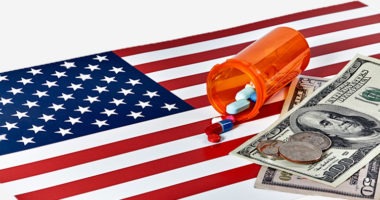The Challenges and Opportunities for GSK’s New CEO
GlaxoSmithKline’s (GSK) has announced that Emma Walmsley, currently chief executive officer (CEO) of GSK’s Consumer Healthcare Division, has been appointed GSK CEO Designate and will succeed Andrew Witty as GSK CEO, when he retires in March 2017.So what may be in store for the new executive?
The new CEO will inherit a company seeking to transform itself with a renewed pipeline and recent moves emphasizing a shift from higher-margin, higher-risk pharmaceuticals to higher-volume, lower-margin businesses of consumer healthcare and vaccines. Walmsley, as head of GSK’s consumer healthcare business, has already been a part of that strategy. DCAT Value Chain Insights examines what is in store for the new GSK CEO.
New CEO but does same strategy continue?
When Witty retires next year, he will culminate 32 years with GSK and nearly 10 years as CEO. Walmsley has been the CEO of GSK Consumer Healthcare, a joint venture between GSK and Novartis, since it was created in March 2015. Prior to this, she was president of GlaxoSmithKline Consumer Healthcare and has been a member of GSK’s corporate executive team since 2011. She joined GSK in 2010 from L’Oreal where, over the course of her 17-year career, she held a variety of marketing and general management roles in the UK, Europe, and US. From 2007, she was based in Shanghai as general manager, consumer products for L’Oreal China.
Walmsley took over the head of GSK’s consumer healthcare business following the formation of joint venture between GSK and Novartis as part of a three-part deal between the companies in 2015. Under that deal, GSK and Novartis created a consumer healthcare joint venture that combined the two companies’ consumer healthcare divisions, Novartis acquired certain oncology products and pipeline compounds from GSK, and GSK acquired Novartis’ non-influenza vaccines business.
That deal signified a strategic emphasis for GSK by focusing on higher-volume, lower-margin businesses of consumer healthcare and vaccines and selectively positioning itself in higher-margin, higher-risk pharmaceuticals only for certain therapeutic areas.
In the new consumer healthcare joint venture formed under that deal, GSK Consumer Healthcare, Novartis holds a 36.5% share and GSK the balance. The new joint venture has leading positions in four key over-the-counter categories: wellness, oral health, nutrition, and skin health. The joint venture has scale and commercial presence in the developed world as well as in key emerging markets.
Also as part of that three-part deal, Novartis divested its vaccines business (excluding its vaccines influenza business) to GSK for up to $7.1 billion plus royalties. The $7.1 billion consists of $5.25 billion paid upon completion and up to $1.8 billion in future milestone payments.
In the last and largest piece, GSK divested to Novartis oncology products, including two pipeline candidates at the time of the deal, for an aggregate cash consideration of $16 billion. Up to $1.5 billion of this amount is contingent on certain development milestones. With the closing of the deal, Some key products from GSK’s divestment include: Tafinlar (dabrafenib), a BRAF inhibitor, and Mekinist (trametinib), a MEK inhibitor, both approved for the treatment of metastatic melanoma; Votrient (pazopanib), a kinase inhibitor for treating advanced renal cell carcinoma and advanced soft tissue sarcoma; Promacta (eltrombopag) for treating thrombocytopenia; Tykerb (lapatinib) for treating HER2+ metastatic breast cancer; and Arzerra (ofatumumab) for treating chronic lymphocytic leukemia. Novartis also gained opt-in rights for GSK’s current and future oncology R&D pipeline (excluding oncology vaccines), which could be a source of new compounds and new targets. Sales of the acquired GSK oncology products in 2014 were approximately $2.0 billion.
Earlier in 2016, GSK also completed its transaction to divest its rights to ofatumumab for auto-immune indications to Novartis Pharma AG, a subsidiary of Novartis AG, following regulatory approval. The consideration payable by Novartis Pharma to GSK may reach up to $1.034 billion and comprises a series of milestone payments as follows: $300 million paid at closing; $200 million payable subject to the start of a Phase III study in relapsing remitting multiple sclerosis by Novartis; and further contingent payments of up to $534 million payable on the achievement of certain other development milestones.
Will new product sales deliver?
Key for Walmsley going forward is increasing new product sales as GSK faces declining revenues for its pharmaceutical business and certain key products. In 2015, GSK posted revenues of £23.9 billion ($31.0 billion), up 6% at constant exchange rates (CER). Pharmaceuticals represented the largest piece of the company’s revenues in 2015, accounting for 60% of total revenues or £14.2 billion ($18.4 billion), a decline of 7% year over year. Consumer healthcare was the second largest piece at 25% or £6.0 billion ($7.8 billion), which was up 44% in 2015 due to the company’s formation of the consumer care joint venture with Novartis. Vaccines represented 15% of 2015 revenues or £3.7 billion ($4.8 billion) in 2015, up 19%, also due to the acquisition of Novartis’ vaccines business (excluding flu). In 2015, total operating profit was £10.3 billion ($13.4 billion), but operating profit for core products was down 9% CER to £5.7 billion ($7.4 billion).
Key for GSK going forward is increasing new product sales. Pharmaceuticals turnover was down 7% on a reported basis, primarily reflecting the disposal of its oncology business to Novartis in 2015, a 7% decline in respiratory sales and a 15% decline in sales of established products, largely offset by growth in other new pharmaceuticals products, particularly HIV products Tivicay (dolutegravir) and Triumeq (abacavir, dolutegravir, and lamivudine).Sales of new pharmaceutical products were £1.713 billion ($2.227 billion), an increase of £1.284 billion ($1.670 billion), which offset the decline in sales of GSK’s respiratory product, Seretide/ Advair (fluticasone/salmeterol) of £548 million ($712 million). Global Seretide/Advair sales were £3.7 billion ($4.8 billion), down approximately 30% from their peak in 2013 as the products face generic-drug incursion. Key new product sales were from HIV (Tivicay, Triumeq), respiratory (Relvar/Breo, Anoro, Incruse), and meningitis vaccines (Menveo, Bexsero
In 2015, the company estimated its internal rate of return in R&D as approximately 13%. At an R&D event in November 2015, the company identified approximately 40 new medicines or vaccines, 80% of which have potential to be first-in-class, with an emphasis in the following therapeutic areas: oncology, Immuno-inflammation, vaccines, and infectious, respiratory, and rare diseases. Up to 10 regulatory filings include Shingrix (shingles vaccine), sirukumab (rheumatoid arthritis), Benlysta SC (lupus) and ICS/LABA/LAMA (chronic obstructive pulmonary disease). Up to 10 Phase lll starts include cabotegravir (HIV), daprodustat (anemia) and Men ABCWY vaccine, and up to 20 Phase ll starts are in immuno-inflammation, oncology, respiratory, and infectious disease. The company pointed to the potential to file up to 20 assets with regulators by 2020 and expects to generate revenues of EUR 6 billion ($7.8 billion) on a CER basis by 2018, up two years from its initial time estimate of 2020.
GSK is also moving forward with cost-savings plans and other efforts to improve cash flow. In 2015, it gained £6.7 billion ($8.7 billion) as a result of asset disposals in 2015. In 2015, it delivered incremental cost savings of £1 billion ($1.3 billion) and annual costs savings of £3billion ($3.9 billion) by the end of 2017..





